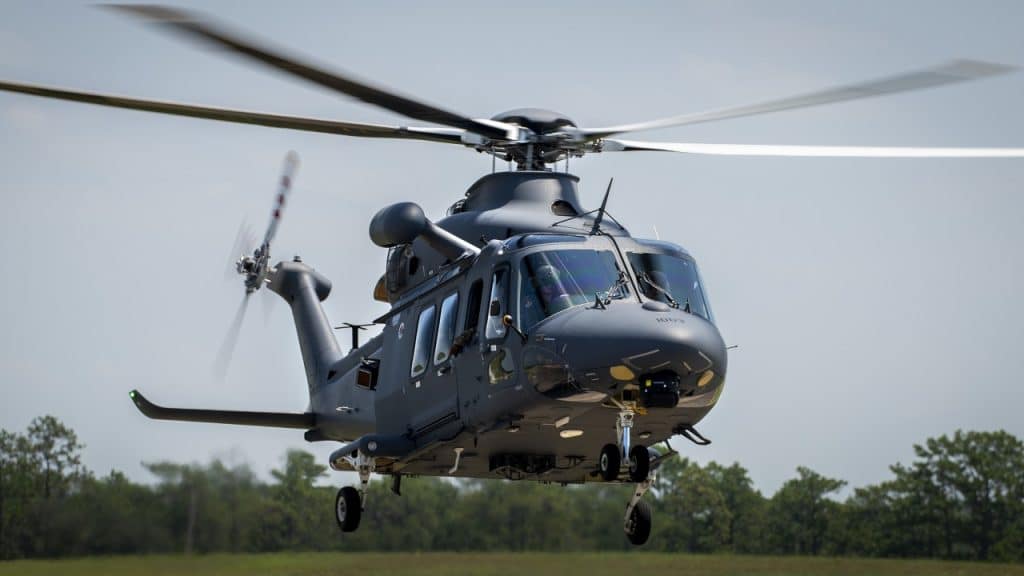Boeing officially delivered the first four MH-139A Gray Wolf helicopters to the US Air Force. The machines were handed over to USAF personnel in the middle of the month, on August 17, the first flight under new supervision was made, and on August 23, their receipt was confirmed by the Air Force Life Cycle Management Center. Now they will be used in the development testing phase, which, if everything goes according to plan, will be followed by a small-lot production phase in 2023.
MH-139A is a deep modification of the civilian Leonardo AW139 helicopter. In September 2019 – presented as a product of the Boeing / Leonardo consortium – it won the tender for a successor to the UH-1N Twin Huey helicopters used by the US Air Force. The Air Force plans to purchase eighty-four helicopters of this type, eight of which have been ordered so far.
-ADVERTISEMENT-
Gray Wolfy will mainly guard the land-based ballistic missile launchers with nuclear warheads as part of the 582nd Helicopter Squadron (Group). The squadron protects all three strategic bases with Minuteman III missiles: Francis E. Warren, Malmstrom and Minot. In addition, they will also be used to transport VIPs. Each MH-139 can transport nine fully equipped soldiers. The flight duration is three hours.
A few weeks ago, the Federal Aviation Administration MH-139A received a supplemental type certificate from the civilian Federal Aviation Administration (FAA). The approval of this institution was necessary for Gray Wolf to be able to operate freely in civilian airspace over the United States and to be approved to fly with the US Air Force.
On August 17, 2022, MH-139A in preparation for its first take-off from Eglin base after the machine passed into the hands of the US Air Force.
(US Air Force / Samuel King Jr.)
In June, the head of Boeing’s powered lift division, Mark Cherry, admitted that the certification procedure was taking longer than originally assumed. The FAA reportedly had a problem with the MH-139A’s specialized military equipment (for example, the self-alien identification system) and assessing its impact on flight safety. Of course, the COVID-19 pandemic also stood in the way. In 2021, the USAF postponed the planned order for the MH-139 due to the lack of certification.
It must be emphasized, however, that the fault is not solely with the FAA and the coronavirus. A recent report by the Government Accountability Office, which is the equivalent of our NIK, shows that Boeing had problems with the integration of some new components with the AW139 airframe. The GAO felt Boeing had underestimated how complex the process would be. The first phase of certification tests forced some changes to be made in terms of integration.
In the same tender, Lockheed Martin and Sierra Nevada Corporation proposed specialized variants of the UH-60 helicopter. It was Lockheed with its HH-60U that was considered a clear favorite. And since the command of the US Air Force was said to have chosen the Black Hawk in advance, it would also give a chance to the used UH-60A modernized to a standard similar to the UH-60L, which Sierra Nevada was offering under the name Sierra Force.
The decision to conduct the tender was a success for the aviation industry, which lobbied intensively for the possibility of offering helicopters by all interested parties. The surprisingly low price ($ 1.7 billion below the estimate) spoke in favor of the AW139 – already produced in Philadelphia. The Air Force is the only US military user of the MH-139, and this is the first time in many years that machines have been used, the design of which is in no way related to the helicopters of other branches of the armed forces.
See also: Sena 200 – the anointed successor to the Egyptian BMP-1S
US Air Force / Samuel King Jr.

